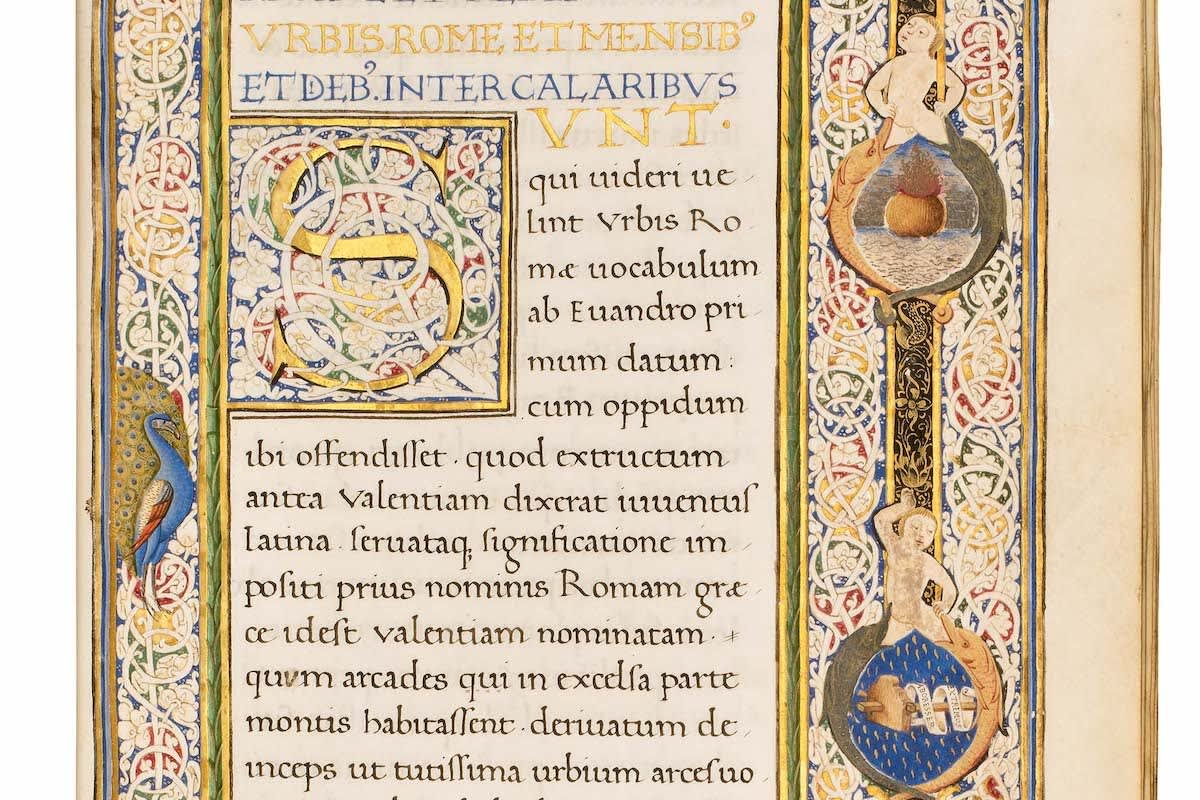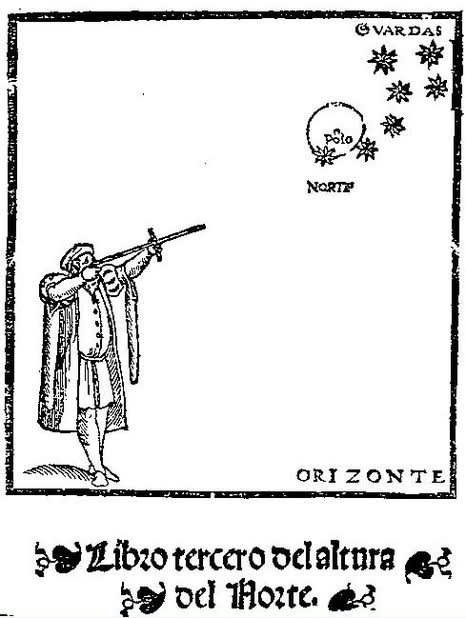
The fine humanist manuscript of Solinus' Collectectanea rerum memorabilium ('collection of memorable things') is most elegantly executed. When we were analyzing the manuscript, the devices on the openings page of the text remained unexplained. Here we try to solve the small puzzle.
The script of the book is attributed to Giovanni Marco Cinico, the highly appreciated royal copyist and librarian at the Aragonese court in Naples, who likely collaborated in this manuscript with Cola Rapicano, the official illuminator in Naples from 1451 to 1488. Without sparing material, the scribe and illuminator together created an extremely fine and beautiful book. Rapicano added the illumination consisting of 51 golden initials (40 x 40 mm) with white vine decoration with blue, gold, purple, and green infills and with border extensions decorated with golden bezants and sprays. A total of 180 refined 3-line initials in gold and on a field of colours confirms that the manuscript was carefully planned and completed. Two pages have foliate borders: f. 1r and f. 7r.

On the latter, the text is fully surrounded by decorated borders, filled with white vines with gold, purple and blue infills, and adorned with colourful peacocks, rabbits, and putti holding a green wreath with the coat of arms of Ferdinand I of Aragon, King of Naples. In the lower right corner, a putto offers a silver bowl filled with large fruit surrounded by green leaves – mimicking those in the wreath surrounding the royal arms. Two separate putti sit on top of roundels formed by the meeting of a golden and a silver dolphin (in fact, their legs are in the mouth of the dolphins). Each roundel includes a symbolic emblem or device, which remains unexplained. The one on top features an erupting sun – potentially a reference to the author’s name Solinus (?) – set on water and representing an 'exploding' sun at sunrise. The second contains a wooden instrument encircled by a text-scroll and inscribed: “extremos aboresser”.

The device is set before a blue ground filled with golden drops, presumably a blue, starry heaven. Both devices seem to visualize the opposition of daylight and night-time. This is rather intriguing, considering that this book was made for a patron who resided on both sides of the Mediterranean sea. The Mediterranean context determined or affected all travelling between Aragon / Valencia and Naples - sailing by boat via Mallorca and Sardinia, The tool depicted 'at night-time' is likely a nautical cross staff, first described by the French-Jewish mathematician from Provence, Levi ben Gershom (also known as Gersonides, 1288-1344) in his Book of the Wars of the Lord. It is also known as balastella, fore-staff or Jacob's staff. This instrument consisted of a square-shaped staff marked off with a scale, and fitted with a sliding cross-piece set at right-angles - it was used in navigation (and astronomy) as a simple device to measure angles. The navigator would hold one end of the staff to his eye to measure, for instance, the angle between the horizon and the sun or pole star to determine his vessel's latitude (it was a precursor, so to speak, of the sextant). This may now also explain the somewhat enigmatic inscription extremos aboresser (abhorrrere = to loathe).

The text-scroll 'to dislike extremes' surrounding an instrument that supports navigation (= the art of steering a ship 'by the shortest good way, by the most appropriate direction and in the shortest time') may raise eyebrows but is now understandable. The two devices show that during daytime Sol(inus) brightens the world (with his knowledge), while at night-time the fore-staff helps to avoid "falling into extremes".


